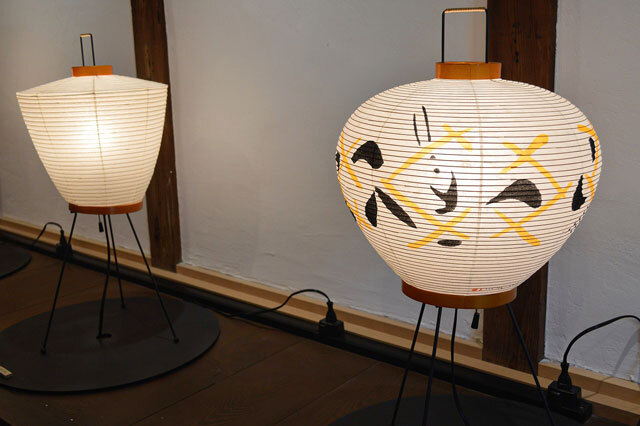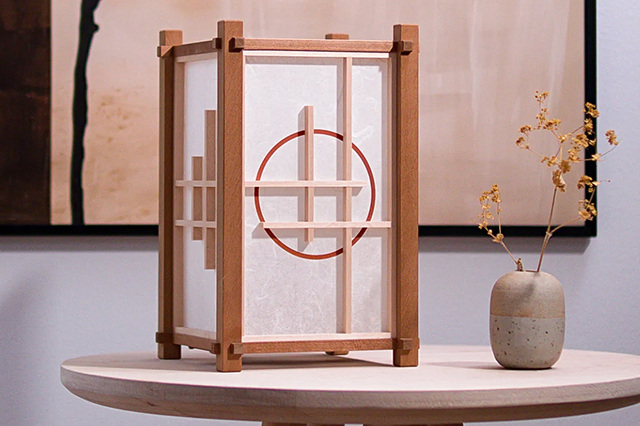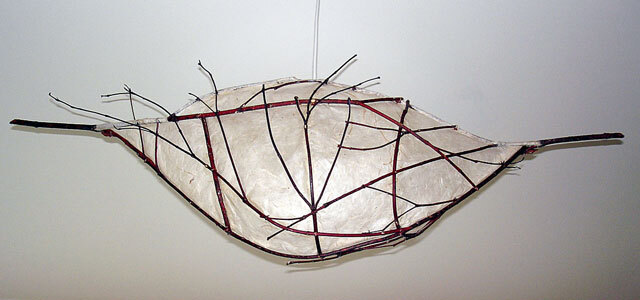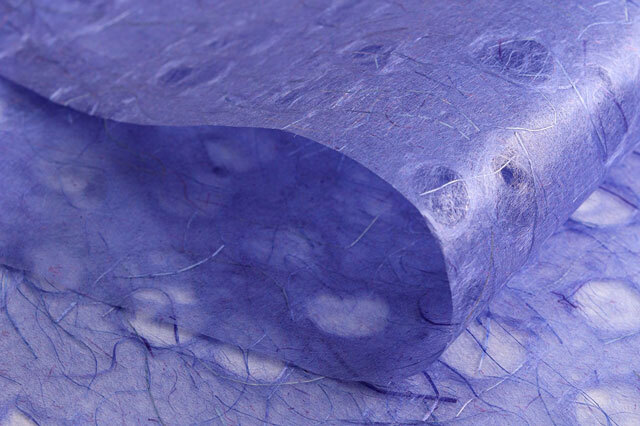Lighting Up Washi: Lamps and Lanterns
2025 Oct 15th
In our part of the world, it is autumn. The hours of daylight are decreasing, and the temperatures are starting to fall. It is officially cozy season. What better way to both brighten and bring warmth into your home than washi lanterns and lampshades? Often praised for its strength and translucency, washi lends itself beautifully to use in lighting.

Akari Light Sculptures, image by Asturio Cantabrio
For many in North America and Europe, the image that comes to mind when discussing Japanese paper and lighting is the work of Isamu Noguchi and the ubiquitous Akari light. The Akari light, designed by Noguchi in the early 1950's came to be after his visit to Gifu, Japan. Beautiful, natural washi is stretched over bamboo ribbing to create varying orb- and egg like forms, as well as polyhedral structure lit simply from within. The combination of supporting verticals, wrapped with bamboo ribbing created a pleasing armature to support the washi. We see mass-produced variations of these elegant forms in design stores; you may even have seen Noguchi-inspired lamps at your local Ikea.

lantern with kumiko by Shaun Mavronicolas
The Japanese woodworking technique, kumiko, in which thinly split wooden pieces are carefully worked to fit, without nails, resulting in delicate and sophisticated patterns that lend themselves to screens, and lanterns. One style of kumiko lamp is also known as a shoji lamp and showcases a simple grid pattern. It is the woodworker’s skill and preference that determine how complicated the intersecting pattern of wooden slats will be. Fewer slats, allow washi with inclusions, or surface decorations to show, while an intricate pattern is enhanced by the subtlety of natural washi. While papers such as Kozuke, and Ogawa Kozo Mix offer affordable options, there is also much to be said about the gentle surface interest seen in papers such as, Mura Udaban A Itaboshi that has been dried on wooden boards.

Table lamp using chiyogami by Gill Unwin
Alternatively, if pattern and colour are what you are looking for, Chiyogami is the paper of choice. Chiyogami is known for being tough and lightfast, making it the perfect choice for many home décor applications. From simple florals to elegant traditional and geometric patterns, it can be used to glorious effect in lantern-structures as well as more traditional drum-shaped lamp shades. Or patterns can be combined to create a completely different look. Chiyogami covered lamps have the advantage as being equally beautiful unlit.

Lamp using dogwood and Japanese paper by Kathleen Doody
For those seeking a more natural aesthetic, Japanese papers with a somewhat rustic appearance can take the place of Chiyogami or the more delicate naturals we have been considering in traditional lampshades. Lanterns made using willow and dogwood allow for more organic structures that welcome the combined strength and malleability of washi. Unryu, and chiri papers shine when paired with curving irregular branches. As much sculptures as lighting, washi with inclusions work to enhance the forms during the day and add delight when the lamp is lit.

TIS11236 Tama Grape
And for the more adventurous lamp maker, why not try layering tissue with a natural base? Tama, or one of the many lacy, delicate tissues available can add both colour and pattern but, on their own might seem too translucent, even flimsy, but they lend themselves well to being layered with a strong but simple washi, like Usu Kuchi Heavy.
Has the light of inspiration started to shine for you? Please, share the glow on our Instagram or Facebook and show us what you’ve been making! Let the washi light shine!

